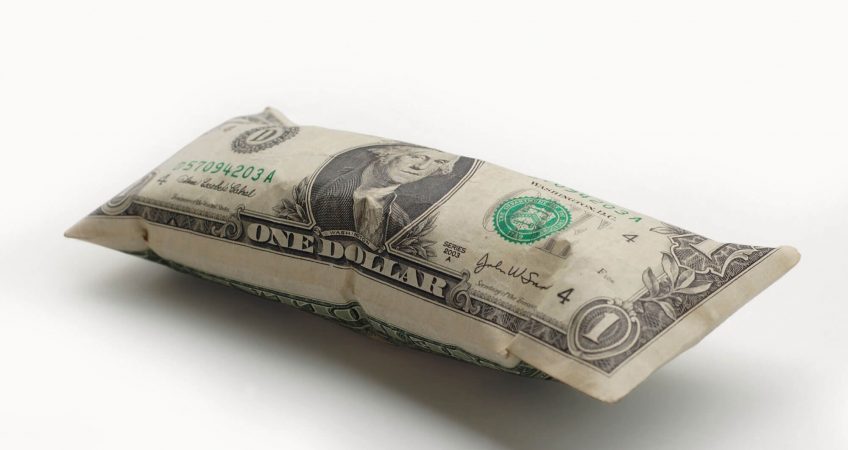
What is Fiat, and Why is Everyone Angry About It?
Fiat isn’t a zippy little Italian car.
Fiat is derived from a Latin term that translates to “let it be so.” Fiat currency is paper money printed and guaranteed by a government without the backing of a physical commodity, such as silver or gold. In other words, fiat currency is worth something simply because a government says so, and the people who hold and exchange that currency agree to it.
The problem with fiat currency is that it has a failure rate of 100%.
Here’s everything you need to know about hyperinflation, fiat currency, and how you can protect yourself in future depression periods that could be punctuated by hyperinflation.
What is Hyperinflation?
Hyperinflation is a period when prices rise uncontrolled while the value of the local currency plummets, often due to reckless currency-printing by the government, far beyond what it makes with tax revenue.
While there is no magic inflation number that marks the start of hyperinflation, many experts consider 50% inflation during the course of a month to be a hyperinflation scenario.
How does hyperinflation affect fiat currency?
In a hyperinflation scenario, paper money is rendered almost useless. After World War I, Germans famously burned Reichsmarks to stay warm because it was more cost-effective than buying wood. Another example is America during the Civil war. The Confederate government printed “Greybacks” to finance their war effort, and began with a matching value to the US dollar in January 1961. By May of 1965, it took 1200 Confederate dollars to equal one US dollar.
A more recent example we can look to is Venezuela. Over the course of several months, prices of goods skyrocketed while the value of the Venezuelan bolivar tanked. Now you can buy a chicken for dinner in Venezuela for about 14.6 million bolivars, or $2.20.
How Can You Protect Yourself During Periods of Hyperinflation?
Precious metals such as gold have been proven to be a smart hedge against depressions and hyperinflation.
Gold prices tend to shoot up during depressions as investors scramble to buy up gold reserves. Then in the depression recovery period, people sell off their gold as prices ease downward. Studies show that gold prices beat inflation rates about 54% of the time, and if you can wait out the inflationary period, gold is an extremely stable investment that holds its value better than just about any other commodity.
In times of freewheeling and unhinged currency, gold and precious metals have been shown to conquer stocks, bonds, property value, and savings accounts.
How did America end up with fiat currency?
In 1913, America all but abandoned the gold standard in favor of the Federal Reserve Banking system. While the dollar remained partially gold-backed, this was the start of America’s fiat currency. Dollar supplies outpaced the gold supply within a couple of decades, and as a result, the US devalued its own dollar by 41% in 1934.
In 1971, the dollar was in a similar situation again. Foreign governments started selling off their USDs for American gold, until President Nixon put a stop to it. At that point, the American dollar was officially a fiat currency, totally unsupported by gold.
The most recent policy, called quantitative easing, will have a lasting impact on the dollar for years to come. From 2008 to 2014, the Fed added $4 trillion to the money supply by taking out credit from member banks and printing more money to add to the economy.
Why Is the Dollar Losing Value?
Have you noticed that your paycheck doesn’t seem to buy as much as it used to?
The unrelenting devaluation of the American dollar is due to several fiscal decisions made over the last century. There is more currency circulating than the economy has generated. It’s a matter of time before irresponsible fiscal policies catch up to us and cause another financial crisis.
Two future causes of the dollar’s devaluation will be loss of confidence in the currency and a rising tide of currency sales. The governments of Japan and China are the two biggest holders of American dollars, and if they start selling off their stockpiles, devaluation of the dollar will happen shortly thereafter.
How to hedge against fiat currency devaluation
The one material good that hasn’t lost value in, well, all of history, is gold.
Governments and individuals will always find inherent value in gold. That makes this precious metal a sound investment and a smart way to diversify any portfolio. While the dollar’s value fluctuates, gold provides a steady anchor point for an increasing number of investors.
When the dollar’s value drops, the price of gold rises. Depending on the severity and duration of the next depression, gold prices could remain high for a long time.
Republic Monetary Exchange is a full-service precious metals brokerage firm helping investors purchase coins and bullion for their personal possession, as well as creating private precious metal self-directed IRAs. We have served thousands of customers nationwide, making RME America’s premier dealer in precious metals.
To find out more about securing your financial future with gold investments, reach out to Republic Monetary Exchange today.
